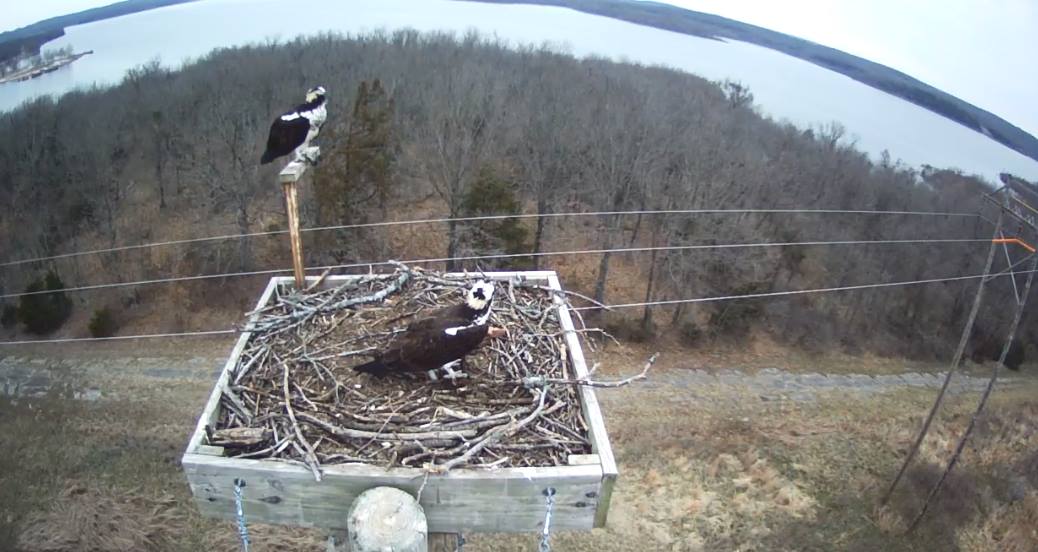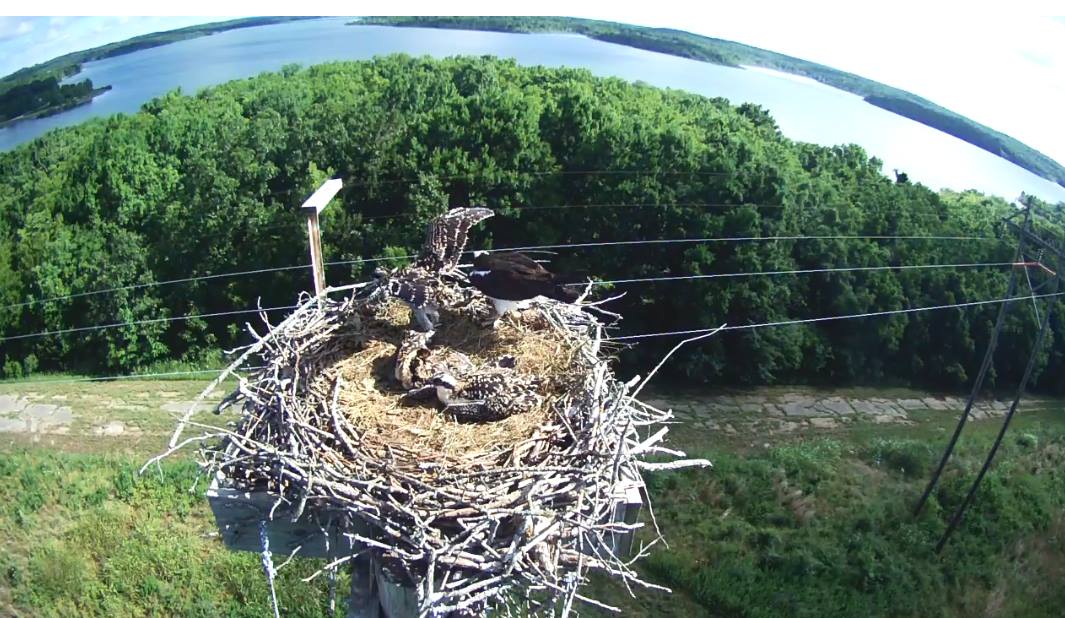Peregrine Falcon Recovery Program
Liberty Utilities has installed two peregrine falcon nesting boxes on stacks at our power generation plants with another planned in the near future. This is part of our continuing collaboration with the Missouri Department of Conservation (MDC). MDC is initiating a statewide nesting box placement project to foster peregrine falcon recovery in Missouri. Peregrine falcons are listed as endangered in the state.
Historically, peregrines nested in small numbers on bluffs along the Mississippi, Missouri, and Gasconade rivers. By the late 1800s, only a few pairs remained in the state. Many of the peregrines living now in Missouri’s urban centers were captive- raised and use nesting boxes and other suitable locations on tall buildings for their eggs. The tall stacks of power plants make for ideal nesting box locations.
At this time, there are 14 active falcon boxes in Missouri, meaning there are 28 individual falcons that nest in the state. Eight of the fourteen nesting sites are at power generating plants. Liberty Utilities is hopeful a nesting pair will soon use the boxes placed at the power plants.




